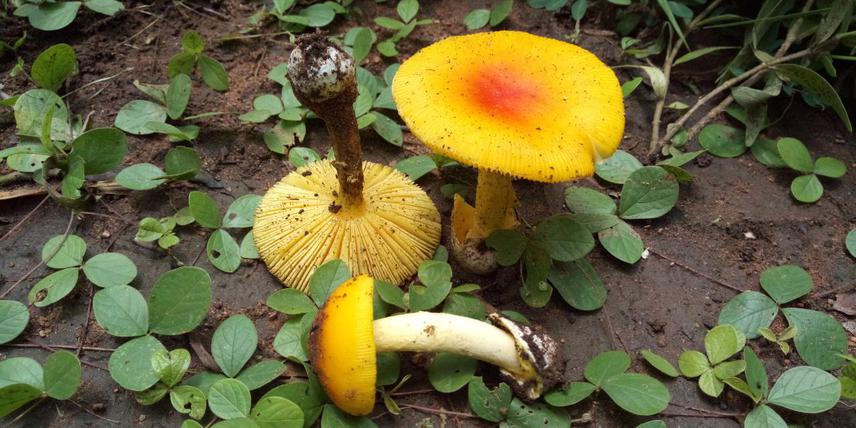Jean Evans Israel Codjia
In Tropical Africa, especially in Benin, fungi play a crucial role in the livelihood of the local people that used them as food, medicinal and economic purposes. Despite the importance role played by this resource, their habitats are fragmented each year by the human disturbances. Previous works in Benin revealed the scarcity of several fungi in some hotspots of biodiversity. Some threatened hotspots of biodiversity like Tanongou waterfall were never explored before regarding fungi studies. The present project aims to document the diversity of fungi of Tanongou waterfall in order to implement the sustainable conservation strategies of their habitats.

Amanita masasiensis.
Tanongou waterfall represents a biodiversity hotspot in Benin. The area shelters a gallery forest dominated by ectomycorrhizal trees such as: Afzelia africana, Berlinnia grandiflora, Monotes Kerstingii, Uapaca guineensis, Isoberlinia spp. Many previous studies have demonstrated that the fungi are in compulsory symbiotic relationships with these ectomycorrhizal trees (Boni & Yorou 2015, Yorou et al. 2017). Thus, the presence of these tree species are the key indicators of the presence of a huge diversity of fungi. Some of these ectomycorrhizal tree species notably Afzelia africana is classified as Endangered (EN) in Benin and Vulnerable (VU) on the IUCN red list due to the human disturbances (illegal logging, bushfires, implementation of farming etc.). In addition, the demographic growth of the population of Tanongou constitute a threat as well to the habitats of fungi because of the daily needs. Indeed, in tropical Africa, fungi are well known for their crucial role in the life of local people using them as food, medicinal, magico-religious and economic purposes (Kone et al. 2013, Codjia & Yorou 2014, Boni & Yorou 2015, Fadeyi et al. 2017, Yorou et al. 2017). Despite this, because of the lack of protection legislation, the lack of knowledge and education of local people in the necessity to preserve the biodiversity of Tanongou waterfall, the level of the fragmentation of the habitats of fungi increase continuously.
In this context, the project seeks to
(1) document the diversity of fungi of Tanongou waterfall through extensive field surveys what will be the first and a crucial step for the protection and preservation of fungi,
(2) document endogenous knowledge relative to fungi,
(3) implement tree nurseries for the reforestation of fragmented areas
(4) raise public awareness activities in
collaboration with the forest office, NGOs, villager authorities, villager committees and heads of schools.